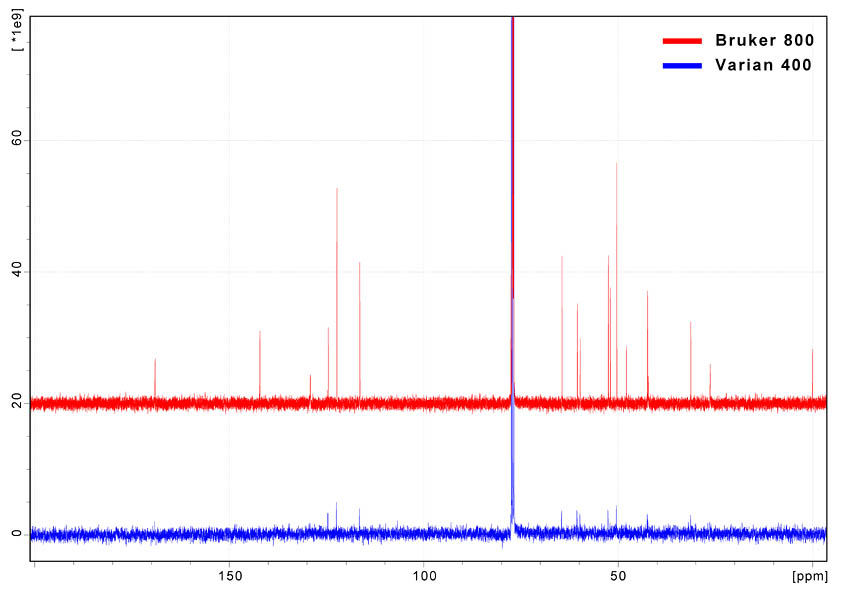 |
 |
Cryoprobe (Bruker) or cold probe (Varian) technology represents the most significant advancement in probe technology in the past few decades. The entire cryoprobe system consists of a compressor, helium circulation regulation and temperature control units, and the probe itself. By cooling the radio frequency (RF) coil and sections of the preamplifiers in liquid helium at near absolute-zero temperature, the probe delivers unprecedented signal-to-noise or sensitivity gain ( up to 4X) over a room-temperature probe by drastically cutting down background noise. This gain translates into up to 20X reduction of data collection time.
The Varian 600MHz (installed in 2004) and Bruker 800MHz (installed in 2007) spectrometers at the UCSB Chem and Biochem NMR Facility are each equipped with a cryoprobe (or cold probe). These instruments were acquired by the Dahlquist lab and collaborators mostly for biomolecular and solid state (Bruker 800 only) NMR research. Both probes have cryogenically enhanced H1 channels. The cryoprobes are also excellent choices for certain challenging small molecule projects and are particularly good for indirect detection of C13 and N15 nuclei as commonly done in multi-dimensional NMR.
Importantly, the C13 channel of the cryoprobe on the Bruker 800 spectrometer is also cryogenically enhanced, making it the most sensitive probe on campus for direct C13 detection either in a 1D or multi-dimensional experiment. The following figure illustrates the drastic gain in sensitivity (signal-to-noise ratio) due to the combination of higher-field strength and cryo-enhancement over NMR400 paired with a broad band probe (BBP) using a dilute (1.7mg/mL) sample. The sensitivity ratio between the NMR800 and NMR400 data is ~10 on average, much more for some peaks. To obtain the same sensitivity on NMR400, at least 4000 mins (2 to 3 days) are needed!
Both C13 spectra were collected with 1024 scans (~40 mins) with NOE enhancement and identical recycle delays, acquisition times and flip angles.
Sample: Strychnine in CDCL3 at 1.7mg/mL

Both NMR600 and NMR800 are open to biomolecular NMR research. Both are also available for staff-assisted work for your challenging, small molecule projects and when best quality of data is desired. NMR600 has been upgraded and is open to general small molecule study by experienced users.
You are encouraged to take advantage of the high-sensitivity of the cryoprobe on NMR800 for C13 detection when the amount of material is limited. For regular users and when material is regularly limited to a few mg/mL or less or for large polymer research, you are encouraged to seek training to use this instrument for C13 detection by yourself.
H. Zhou updated October 2011